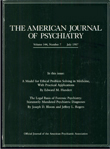Of all the ways I thought to begin this comment on Joseph LeDoux's book, the most appropriate seems a brief account of my feelings when reading it. The Emotional Brain reads like a novel with a plot as thrilling as those of Agatha Christie; however, the book is about hard science.
In his more-than-20-year-old career as a neuroscientist, Joseph LeDoux has made great contributions to the understanding of brain regions involved in the generation of emotions. He has developed his efforts in a thorough examination of the functional role of the amygdala through behavioral observations and anatomical studies in the animal. With The Emotional Brain, LeDoux ties together his and other investigators' experience and scientific facts to develop a comprehensive theory of emotion, awareness, and consciousness—that is, a theory of mind.
A most intriguing aspect of the book is the explanation of the emotional life from the perspective of phylogenetic evolution. Evolutionary old systems in the brain, including the one producing defensive behaviors in the presence of danger, are present in the human as well in the nonhuman animal brain. These systems are considered the factory of emotions. One of these phylogenetically old regions is the amygdala.
Most of the process of producing emotion occurs without the participation of consciousness. The way the amygdala is wired with other brain areas explains why it is possible to react to danger even before one is conscious of exactly what is happening. The amygdala receives sensory inputs from the sensory cortexes by way of the thalamus before these reach the associative cortex. Conscious feelings are generated when the signal reaches the prefrontal regions of the brain. This view makes emotions less elusive to scientific investigation because they can be studied the same way cognitive processes are. LeDoux states that “what differs between the state of being afraid and the state of perceiving red is not the system that represents the conscious content but the systems that provide the inputs to the system of awareness.”
There are specific classes of emotions that are likely mediated by several neural substrates. LeDoux points out that emotion is a label, a conventional way of thinking about functions of the brain and the mind. There is no system dedicated to “perception,” but an olfactory, a visual, and an auditive system; the systems used to defend against danger or for procreation—sexual pleasure—are different.
These constructs are fundamental for contemporary thinking about the brain and mind of patients with psychiatric disorders. They furnish the conceptual framework for examining disorders with disrupted emotion, including anxiety, depression, and schizophrenia. Psychiatrists of every background will find The Emotional Brain interesting and stimulating. By describing several experiments and accounts about past and present theories of emotion, LeDoux lays out the basis for understanding the brain, combining neurobiology and psychology without prejudice. In this age of extreme specialization in psychiatry, we need unifying theories of brain functioning that overcome narrow positions of a mindless brain or a brainless mind.

